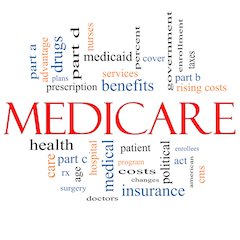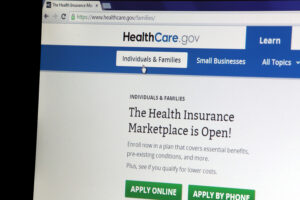An estimated 10 million Medicare beneficiaries who are covered by a Medigap policy and a Part D plan, will spend about $5,000 in 2019 ($416 month) just for Medicare premiums, according to a national survey conducted by The Senior Citizens League (TSCL).
“Medicare Part B and Medigap premiums are among the fastest growing costs in retirement, yet the annual cost-of-living adjustment (COLA) is adjusted using an index that does not include any Medicare premium data,” says Mary Johnson, a Medicare and Social Security policy analyst for the nonpartisan TSCL.
Consequently, Johnson says, the annual COLA increase lags behind the growth in Medicare premiums significantly. “This is a major reason why it’s important for retirees to compare both health and drug plan coverage during Medicare’s fall Open Enrollment period,” Johnson says.
Research by Johnson found that Medicare Part B premiums grew 198% from 2000 through 2019, and the average Medigap premium grew 135% over the same period. But, since 2000, COLAs have raised Social Security benefits just 50%.

“The disparity between the COLA and premiums means that today’s retirees rely more heavily on other sources of income in retirement, such as savings and pensions,” Johnson notes. The U.S. Government Accountability Office however, recently estimated that 48% of U.S. households age 55 and over have no retirement savings.
The Medicare Open Enrollment period continues through Dec. 7. Johnson, who says she volunteers to help friends compare plans, notes this is the time seniors need to be evaluating the health and drug coverage they have now, and to switch plans if they can find better coverage at a lower cost.
“Retirees with a Medigap supplement and Part D plan who are having trouble affording their premiums may want to learn about options for Medicare Advantage and compare it with their current coverage,” Johnson says.
For 2020, 49% of Medicare Advantage plans nationwide will charge no monthly premium other than the Part B premium and, among those that do, the premium averages $36 per month, according to a data note from the Kaiser Family Foundation.
Including the monthly Part B premiums, Medicare beneficiaries covered by a Medicare Advantage plan may spend about $180 per month – less than half the monthly average of people with Medigap coverage,” Johnson says.
There are significant trade-offs in total out-of-pocket costs though, particularly for people who are seriously ill, and those who require a lot of services or hospitalization. Medicare Advantage plans require co-pays for almost every service and the use of in-network providers. On the other hand, Medigap plans pay most, or even all, of out-of-pocket costs, and beneficiaries can use any doctor.
In some areas of the country, another issue may be access to Medicare Advantage plans. In rural areas, there may be few plans and participating providers available. “Where I live, we only have one Medicare Advantage insurer in my county, and just two plans to choose from,” Johnson says. “While the premiums for those Medicare Advantage plans are lower than those for most Medigap plans, some doctors, particularly specialists, don’t participate in the plans. In addition, these plans require prior authorizations for procedures more often than we see under Medigap coverage,” she says.
TSCL says consumers should be careful to nail down details about a new Medicare Advantage plan before disenrolling from a Medigap supplement. Unlike virtually all other health insurance, there are only limited guaranteed coverage periods for Medigap, and it may be difficult or impossible to purchase a Medigap supplement later on if enrollees want to drop Medicare Advantage.
In most states, the only period when Medigap coverage is guaranteed is generally when an individual first becomes eligible to enroll in Medicare. “After that, insurers may require going through underwriting, and may exclude coverage for pre-existing conditions and charge more,” Johnson notes.
Seventy-two percent of participants in The Senior Citizens League’s Senior Survey think Congress should amend the law to allow for a Medigap Open Enrollment period with guaranteed coverage rules.
“Comparing plans is best undertaken with free, unbiased, one-on-one help from a Medicare benefits counselor,” Johnson says.
To learn more, visit http://www.SeniorsLeague.org.














Please, don’t ad to the confusion. October 15-Dec 7 is the Annual Enrollment period January thru March is the open enrollment period. It is not just rose by a different name it is a whole different purpose. Don’t feel bad though Kiplingers made the same mistake.